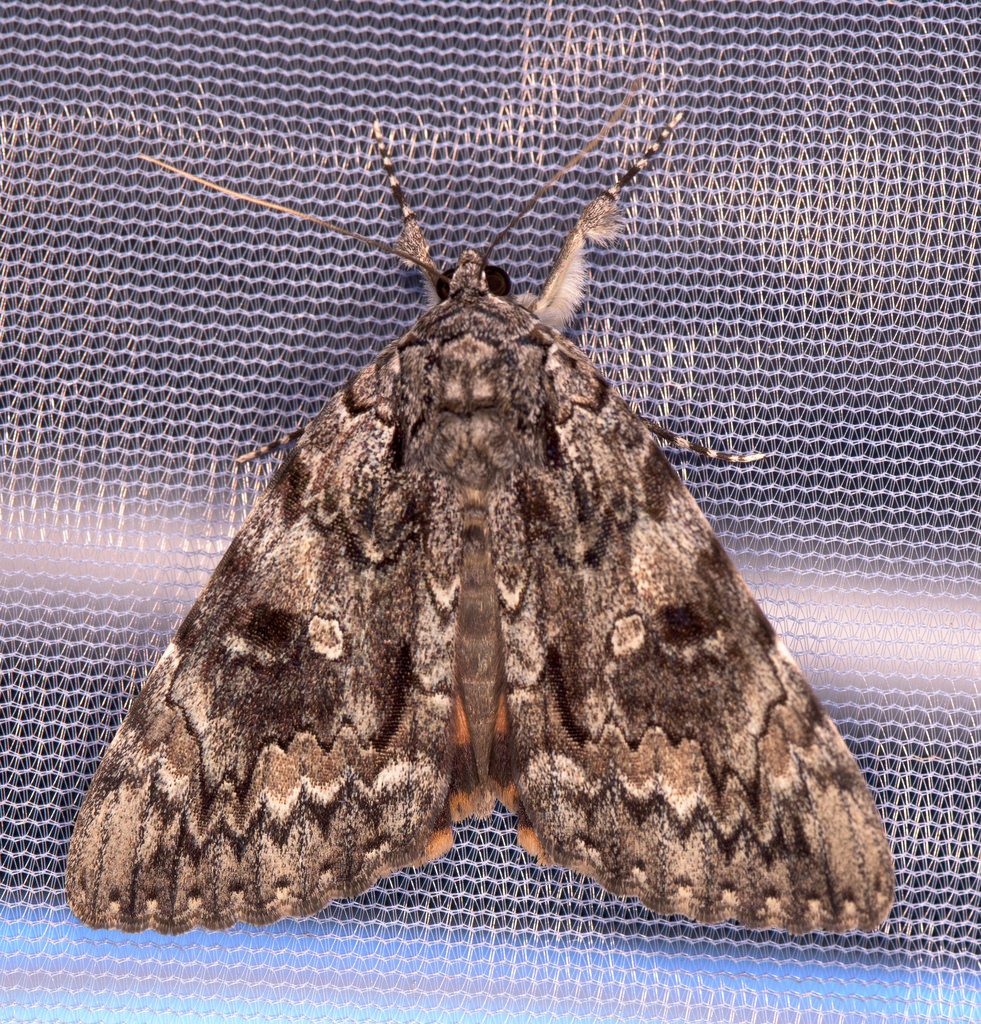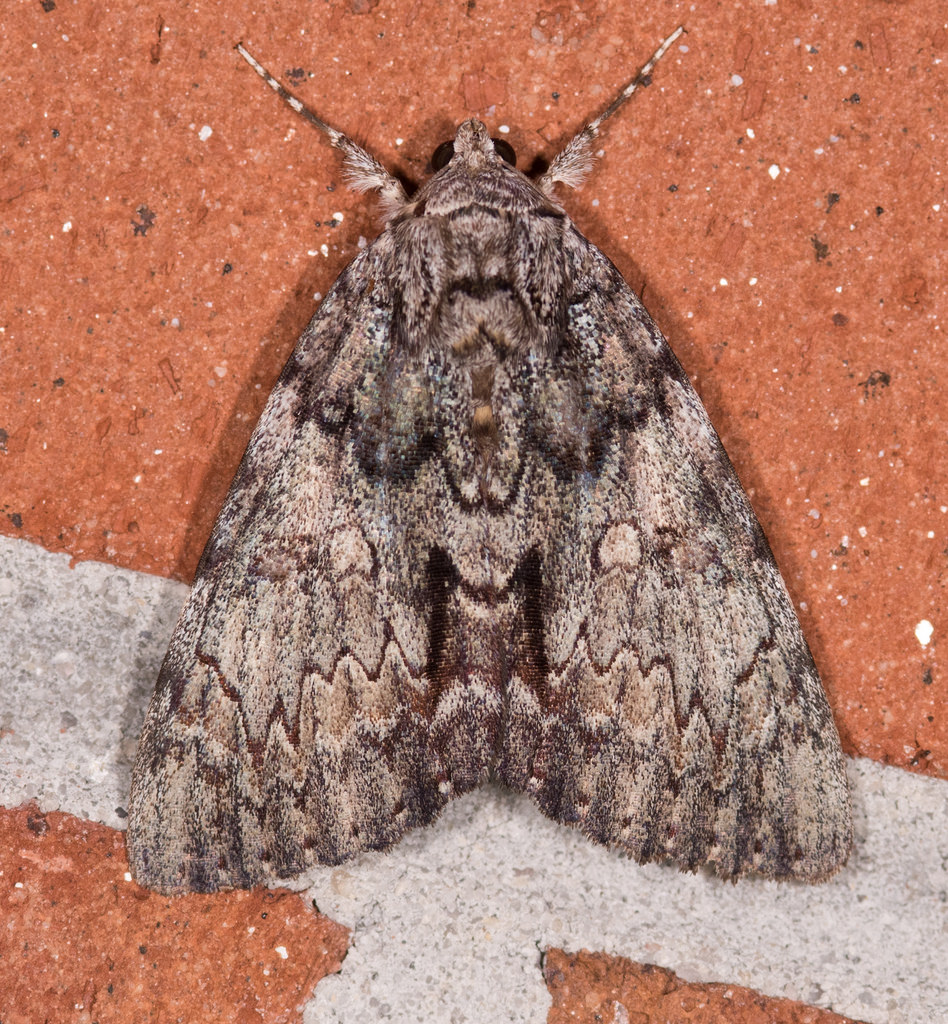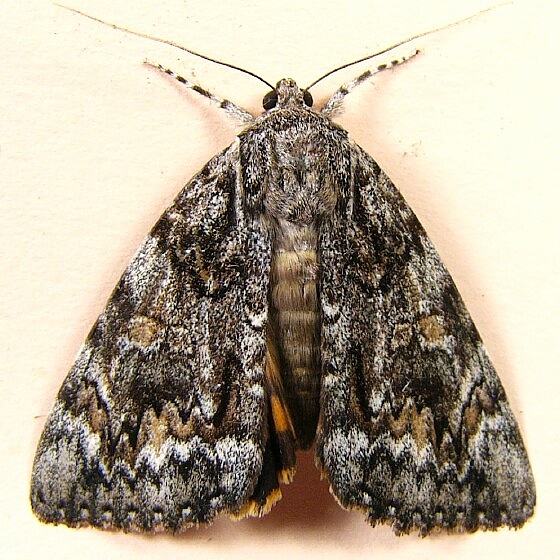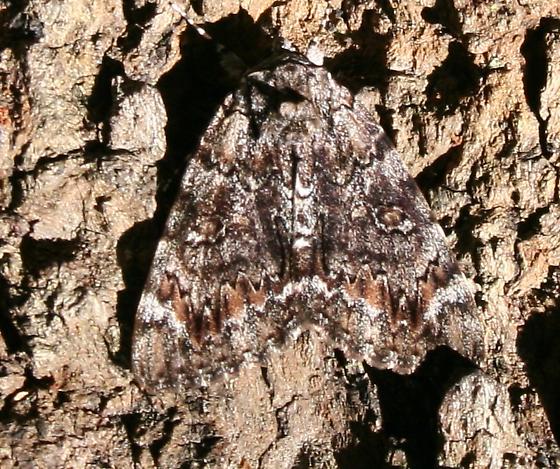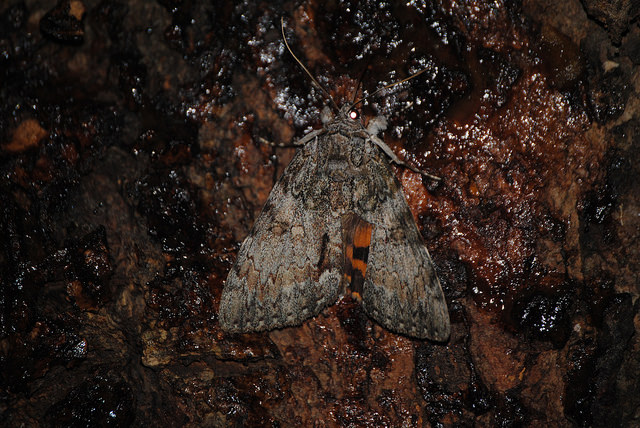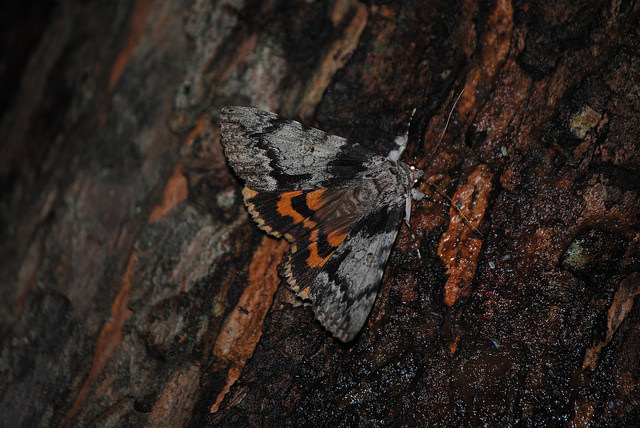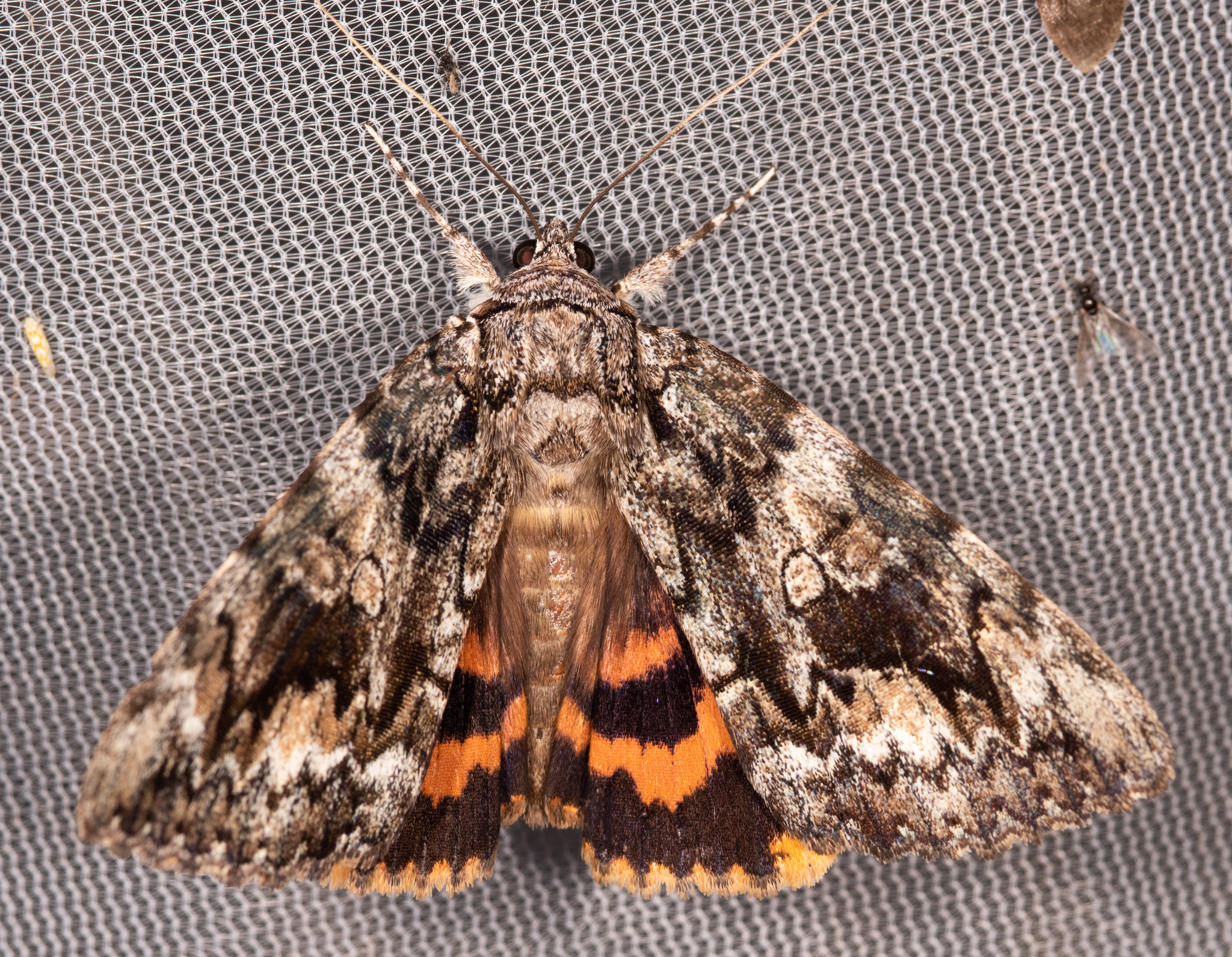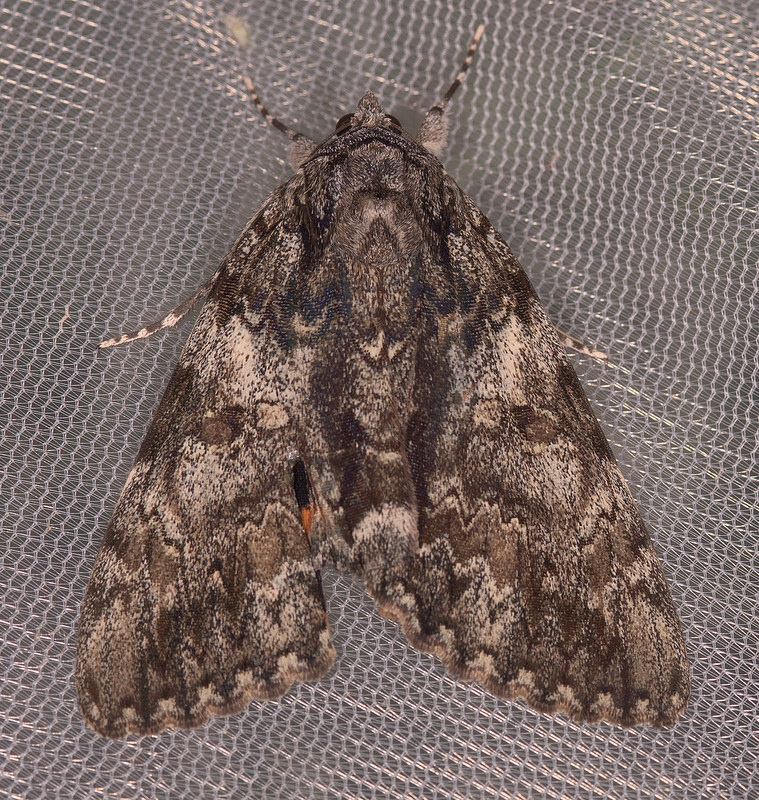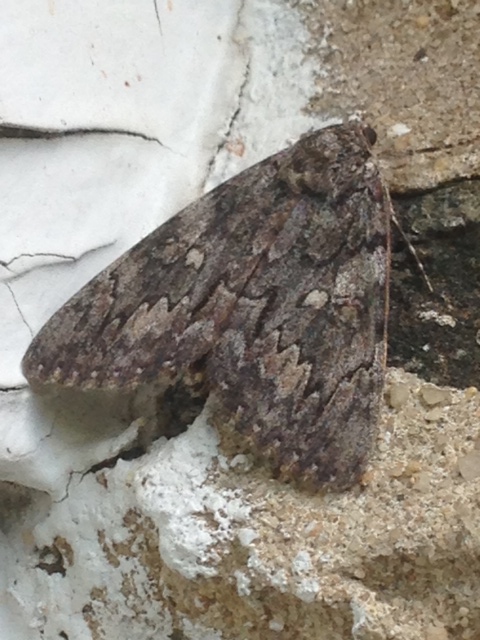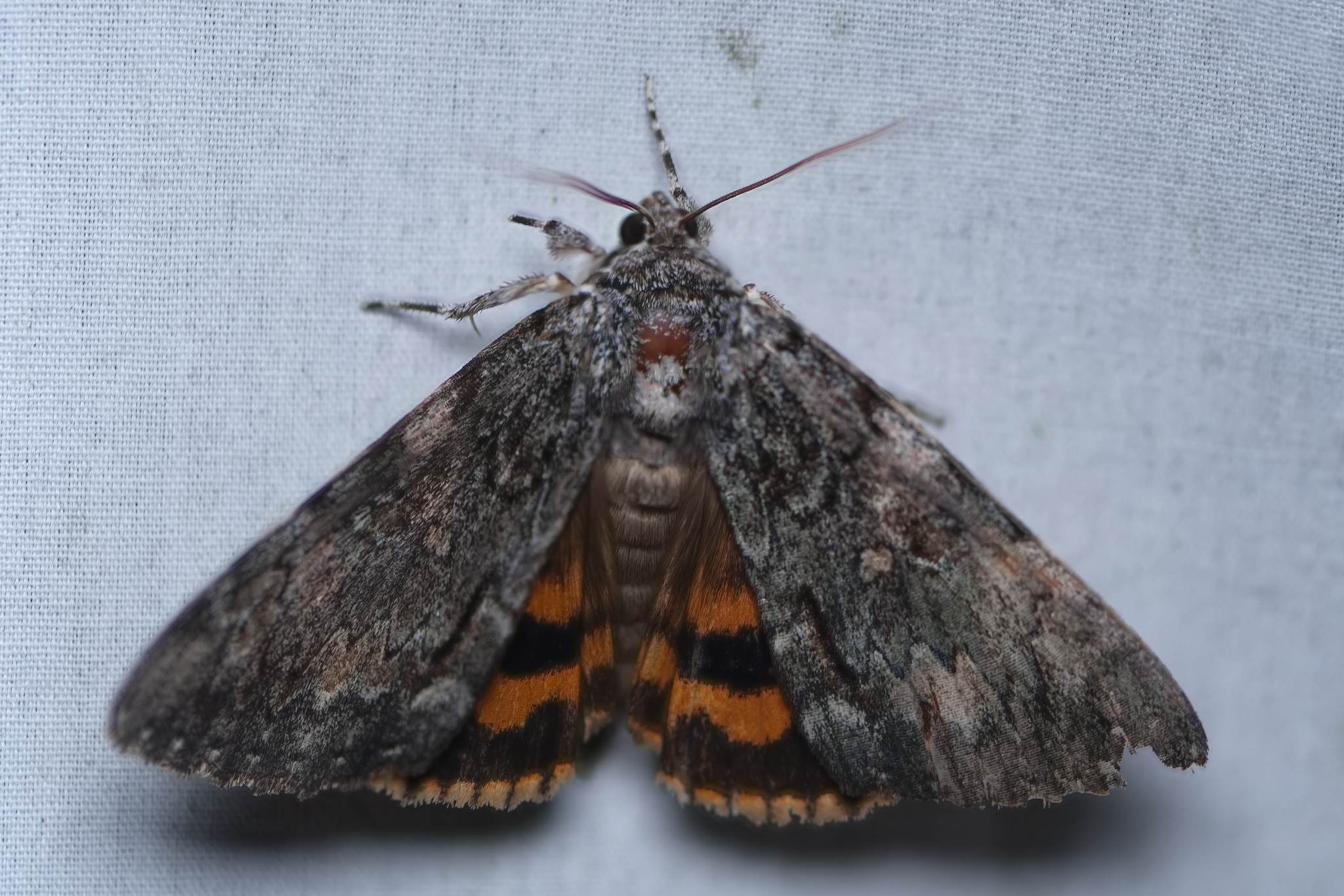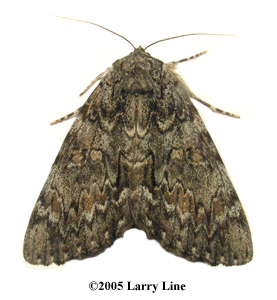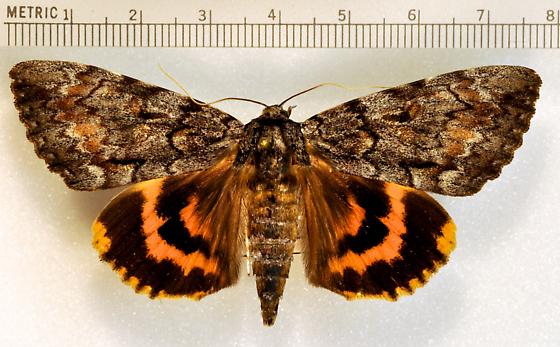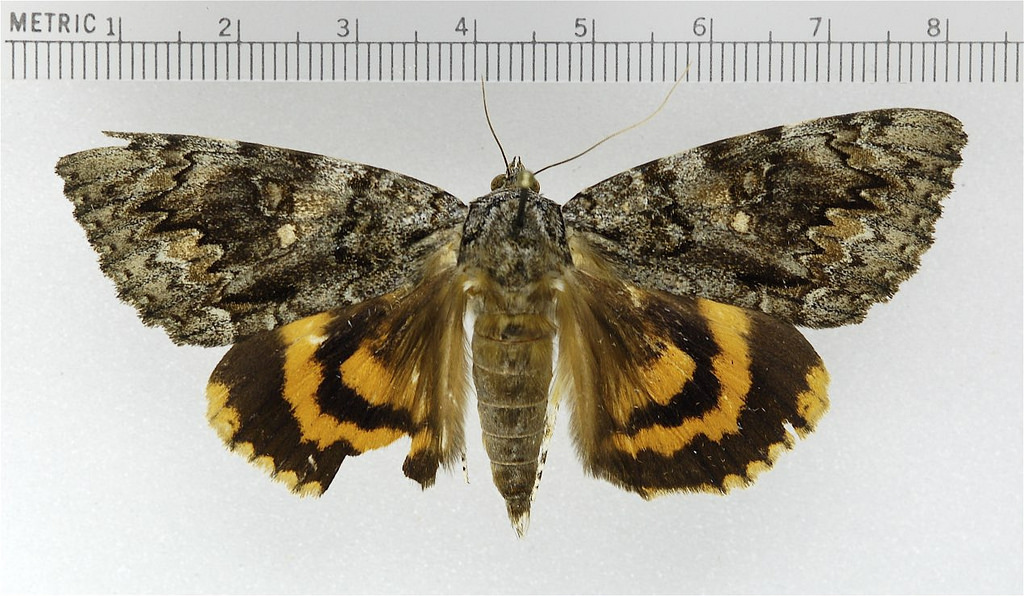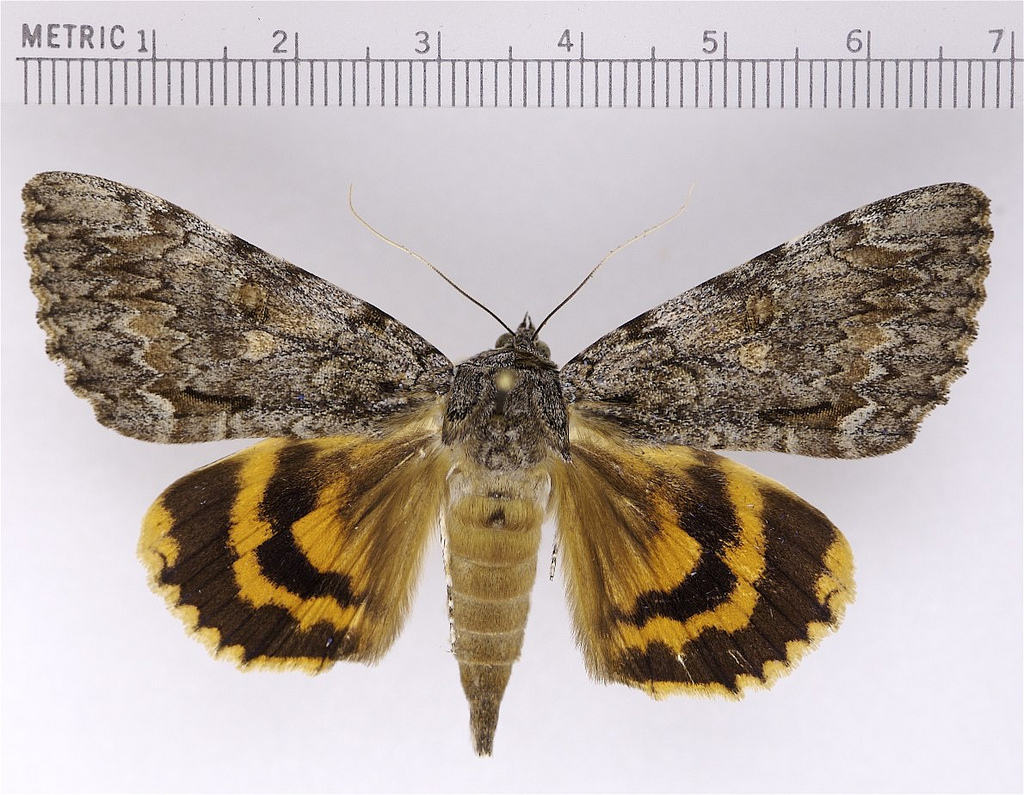Map Snapshot

















75 Records
Relationships
Host plants include Red Hickory, Shagbark Hickory, Pignut Hickory, Mockernut Hickory (Database of the World's Lepidopteran Hostplants).
Seasonality Snapshot
Source: Wikipedia
| Old wife underwing | |
|---|---|

| |
| Scientific classification | |
| Domain: | Eukaryota |
| Kingdom: | Animalia |
| Phylum: | Arthropoda |
| Class: | Insecta |
| Order: | Lepidoptera |
| Superfamily: | Noctuoidea |
| Family: | Erebidae |
| Genus: | Catocala |
| Species: | C. palaeogama
|
| Binomial name | |
| Catocala palaeogama Guenée, 1852
| |
| Synonyms | |
| |
Catocala palaeogama, the old wife underwing, is a moth of the family Erebidae. The species was first described by Achille Guenée in 1852.[1][2] It is found in North America from Ontario and Quebec (where it is rare), through Maine, New Jersey, Tennessee, to South Carolina, west to Arkansas and Oklahoma and north through Iowa, Indiana, Illinois and Michigan.
Some authors consider Catocala palaeogama to be a synonym of Catocala neogama.
The wingspan is 60–70 mm. Adults are on wing from June to October depending on the location. There is probably one generation per year.
The larvae feed on Carya alba, C. glabra, C. illinoinensis, C. laciniosa, C. ovalis, C. ovata, Castanea dentata, Juglans nigra and Malus pumila.
References
[edit]- ^ Yu, Dicky Sick Ki. "Catocala palaeogama Guenee 1852". Home of Ichneumonoidea. Taxapad. Archived from the original on March 15, 2016.
- ^ Savela, Markku (July 27, 2019). "Catocala palaeogama Guenée, 1852". Lepidoptera and Some Other Life Forms. Retrieved October 22, 2019.
External links
[edit]- Oehlke, Bill. "Catocala muliercula Guenee, 1852". The Catocala Website. Archived May 14, 2008.
